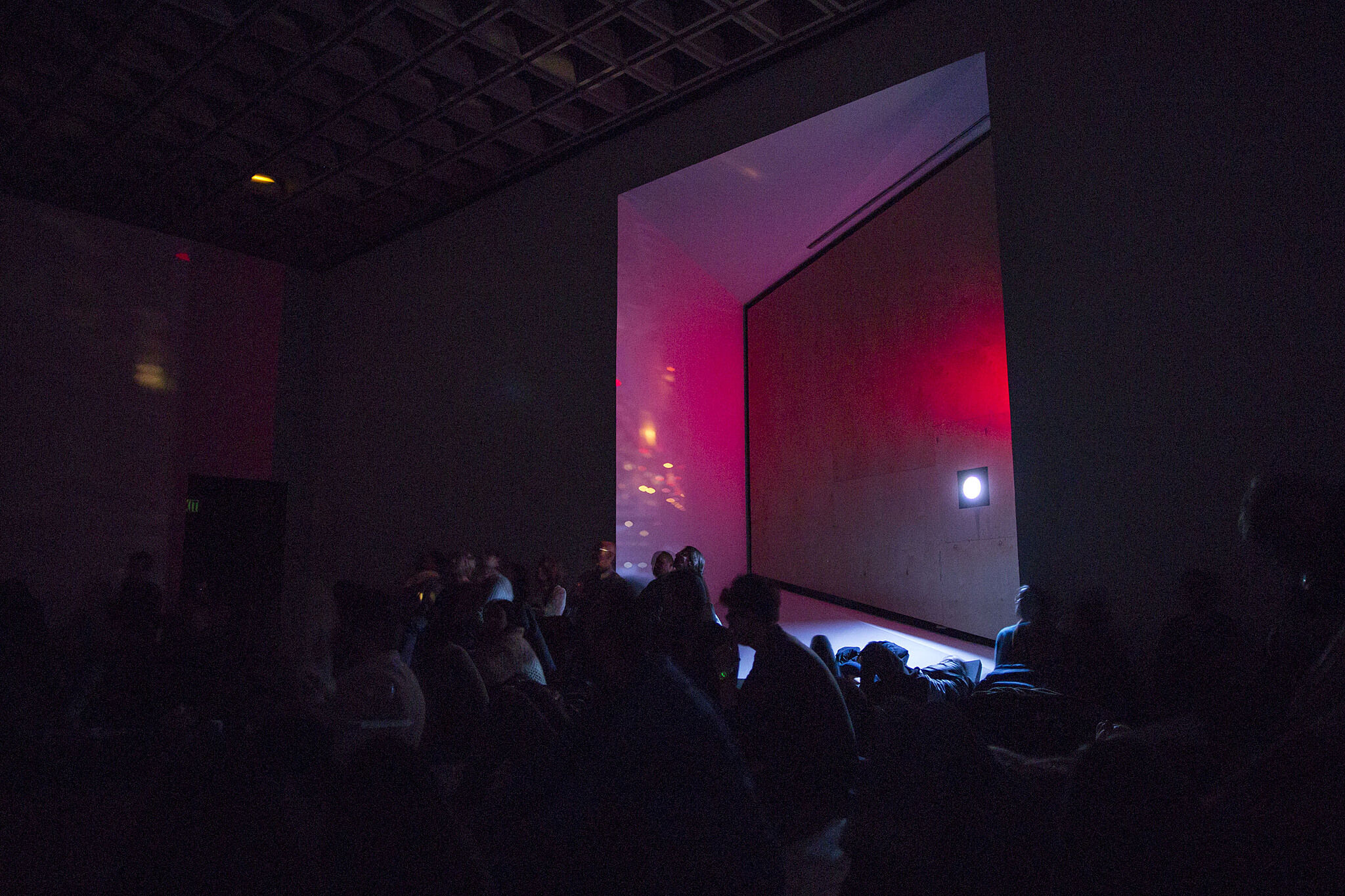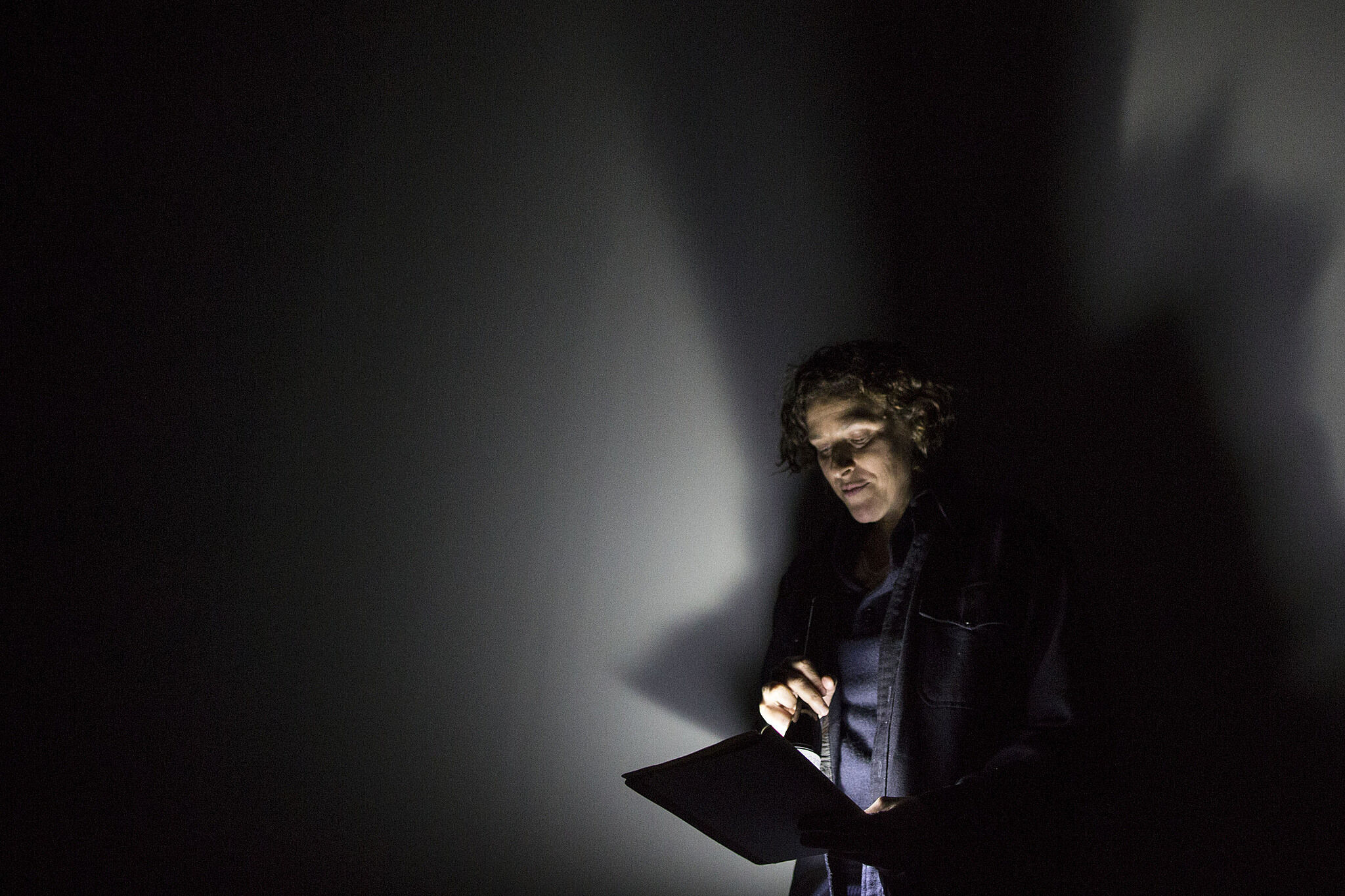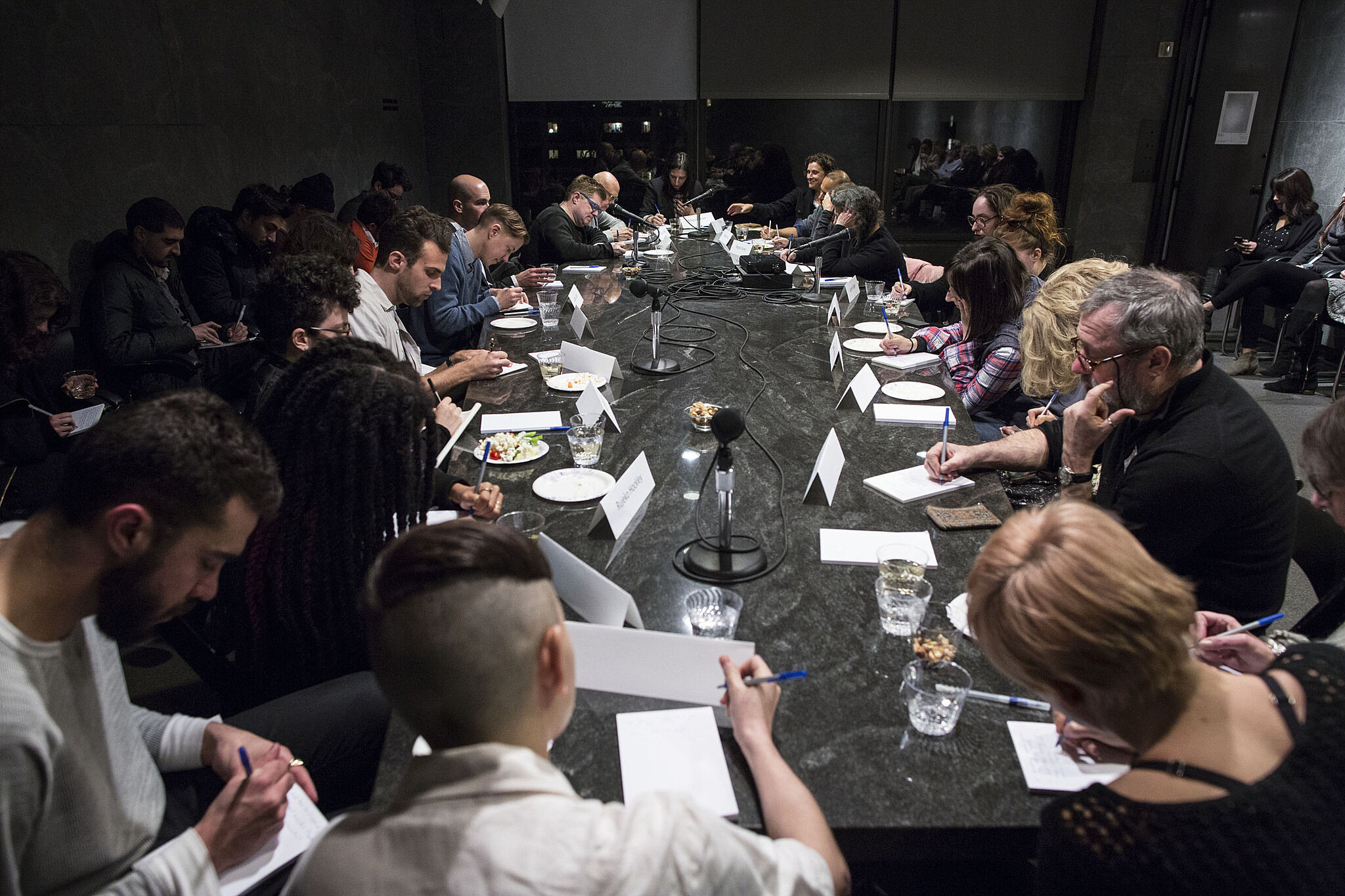Seminars with Artists: Zoe Leonard
Apr 25, 2014
Falling stars in the night sky. Abstract films. Dancers moving across a stage. Piet Mondrian’s painting, Broadway Boogie Woogie (1942-43). Those were some of the associations brought to viewers’ eyes and minds on the evening of March 19 during an experimental lecture and seminar with the artist Zoe Leonard. The event took place in Leonard’s contribution to the 2014 Biennial, 945 Madison Avenue (2014), a walk-in, room-sized camera obscura. An optical device that projects an image of its surroundings, the camera obscura (which in Latin means “darkened chamber”) is a simple principle that has been used for centuries as a tool for drawing and was the basis for the invention of photography in the nineteenth century. Best known for her work with photography, Leonard has recently begun to investigate the history and properties of the camera obscura. This is the sixth site-specific camera that the artist has built; each carefully constructed to interact deliberately with the architecture, location, and history that it “captures” as an image that is never fixed. At the Whitney, Leonard created an aperture at the iconic window on the fourth floor of the Breuer building. Inside, a luminous image of Madison Avenue appears inverted on the floor, walls, and ceiling.
When visitors arrived at dusk, they entered the dim space. 945 Madison Avenue is highly sensitive to the light conditions inside and around it, so we wondered if we would even be able to see an image without daylight outside. Once everyone was seated, all of the lights on the Museum’s fourth floor were turned off. In order to experience its unique image at night, we had to eliminate as much ambient light as possible and allow our eyes to slowly adjust to the changed light conditions. After the hour was up—time passing quickly judging by the gasps of surprise from the audience when the lights came up—a more intimate group adjourned to the Museum’s Trustee Room for a seminar with the artist. Sitting around the Marcel Breuer designed table, participants discussed the ideas behind Leonard’s camera and how they related to the experience (phenomenological and cognitive) of the previous hour.
The unusual structure of the event was well suited to Leonard’s interest in the collective experience of looking, and its analogies with other collective forms—from dialogue to politics. The format was developed by the Whitney’s Education department in collaboration with the Center for Experimental Lectures as a way to reimagine the Whitney’s historic series Seminars with Artists. From 1969 to 2004, the Seminars with Artists program offered notable American artists the opportunity to discuss their practices informally with an intimate and diverse audience. This spring, we are re-launching this series by inviting Biennial artists to present public lectures that creatively explore the research and concepts underpinning their work, which are followed by intimate discussions in a seminar format.
Find out more about upcoming Seminars with Artists and Biennial public programs.
By Megan Heuer, Director of Public Programs and Public Engagement



